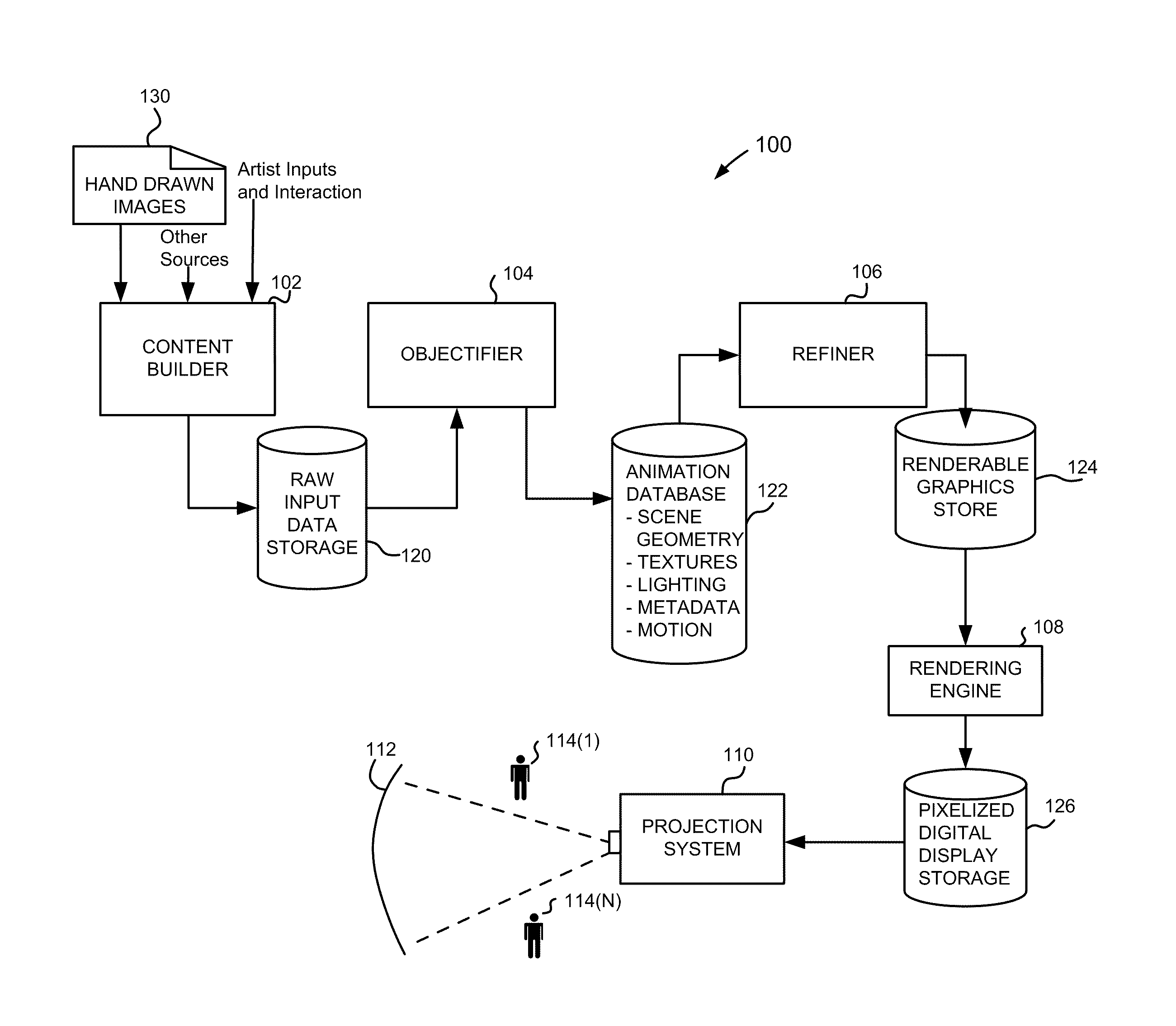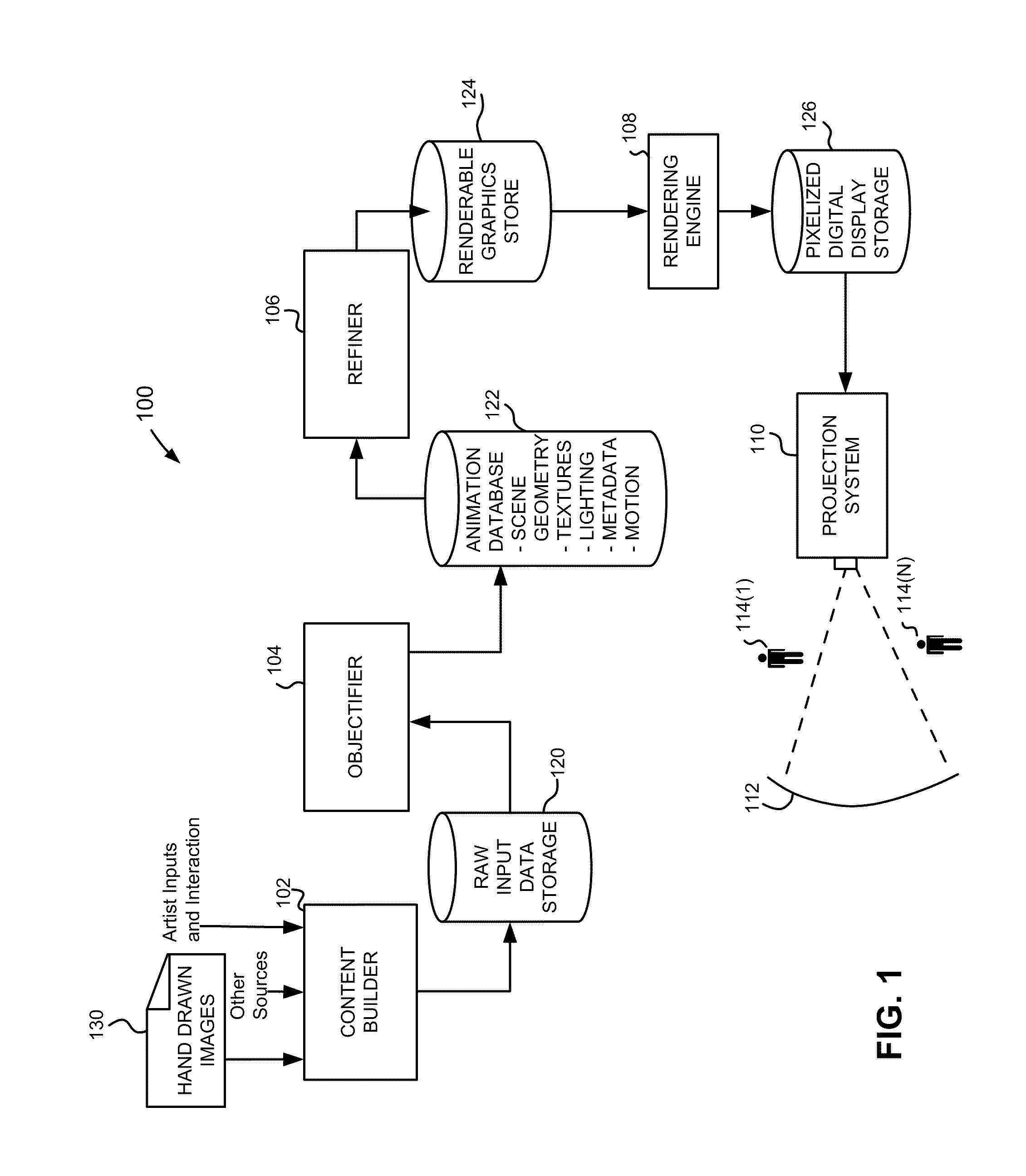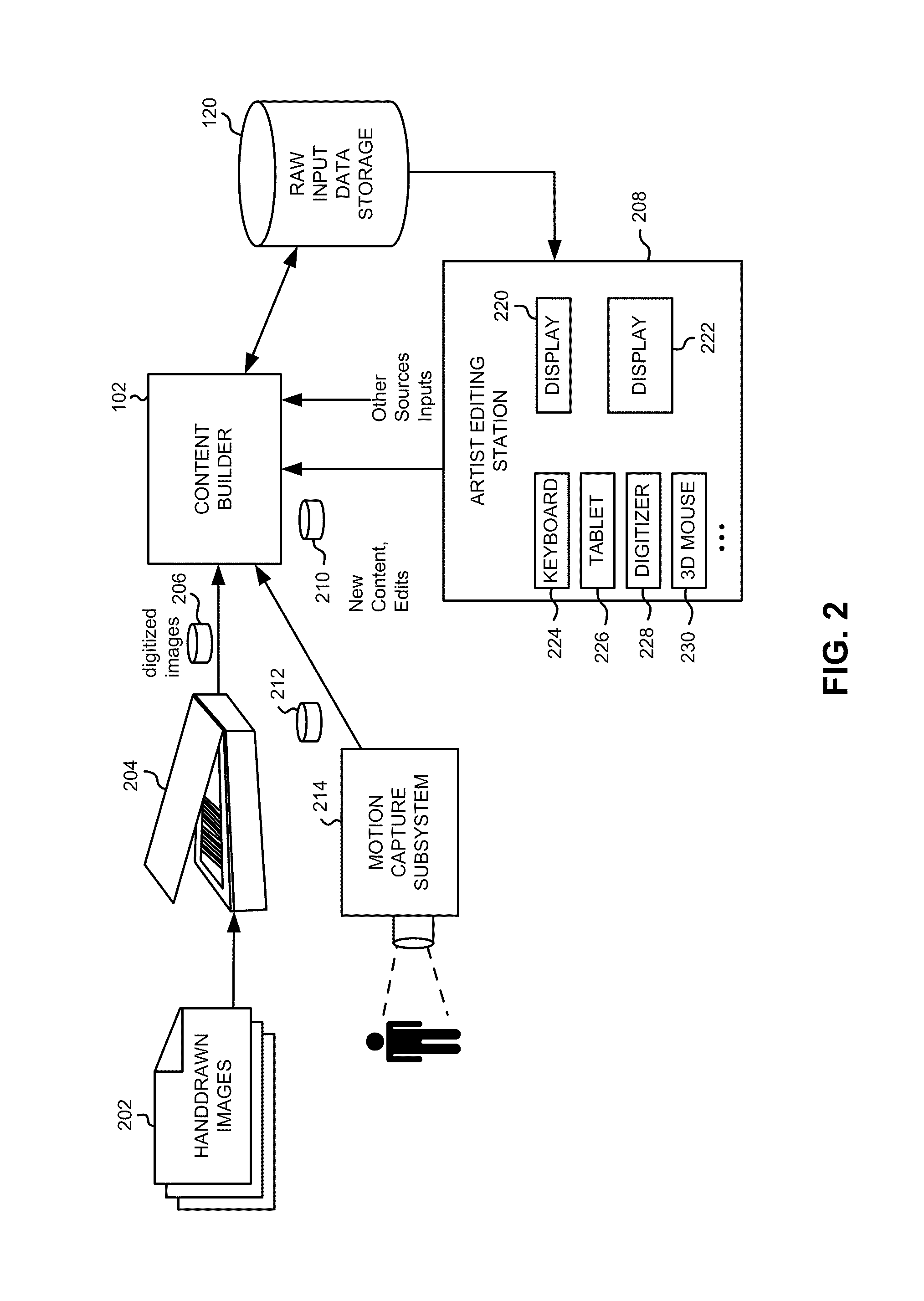Automatic and semi-automatic generation of image features suggestive of motion for computer-generated images and video
a technology of computer-generated images and features, applied in image data processing, instruments, computing, etc., can solve the problems of reducing the desired subtle detail, creating blurred appearance, and complicated animation sequences
- Summary
- Abstract
- Description
- Claims
- Application Information
AI Technical Summary
Benefits of technology
Problems solved by technology
Method used
Image
Examples
example motion
Effects Programs
[0116]Some examples of motion effects programs, expressed in pseudocode are presented below. In these examples, a trace segment is comprises two end points, denoted ts.left and ts.right. the data structures representing each of the end points includes information about the animation time at which this surface location has been intersected by the view ray and linearly interpolated surface properties. They may be interpolated further with a function named INTERPOLATE( ), which takes a trace segment and a time at which it should be interpolated as parameters. The variable ts.center designates the interpolation of the end points' properties to the center of the segment. The SHADE( ) function evaluates the object's surface shader with the given surface parameters and returns its color. The animation time of the current frame being rendered is denoted as “current time.” The output of a motion effect program is a number of fragments, each with a color and coverage value, th...
example
Images
[0123]FIG. 10 illustrates different speed line styles. Customized styles can be achieved in a flexible manner, similar to the way programmable surface shaders are used to generate customized surface appearances. In FIG. 10(a), the ball is translating, whereas in FIGS. 10(b)-(c), the ball is also rotating. FIGS. 10(a)-(b) use a speed lines effect with a falloff function that fades in linearly at both ends of the speed lines and modulates the width of the speed line over time. For the image in FIG. 10(c), the distance of the seed point to the current pixel is used to manipulate the normal passed to the surface shader, giving a tubular appearance.
[0124]FIG. 11 illustrates a bouncing toy ball, rendered with a modified version of a motion blur effect. The effect program computes a reference time for the input trace, and uses the difference between this reference time and the current time to determine the amount of blur, or the shutter opening time in conventional terms. As a result...
PUM
 Login to View More
Login to View More Abstract
Description
Claims
Application Information
 Login to View More
Login to View More - R&D
- Intellectual Property
- Life Sciences
- Materials
- Tech Scout
- Unparalleled Data Quality
- Higher Quality Content
- 60% Fewer Hallucinations
Browse by: Latest US Patents, China's latest patents, Technical Efficacy Thesaurus, Application Domain, Technology Topic, Popular Technical Reports.
© 2025 PatSnap. All rights reserved.Legal|Privacy policy|Modern Slavery Act Transparency Statement|Sitemap|About US| Contact US: help@patsnap.com



